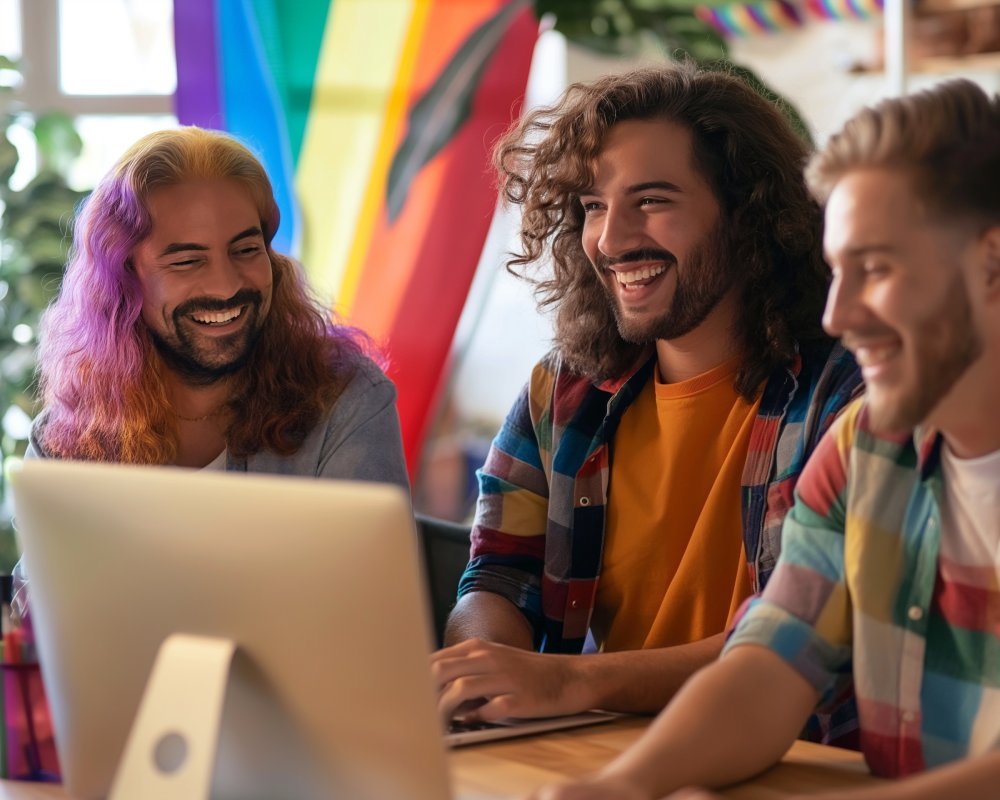
What Is Gay Parenting Like? An In-Depth Exploration of LGBTQ Parenting, Families, and Childhood Experiences
1. Introduction – What Is Gay Parenting Like?
“What Is Gay Parenting Like?” is a question woven into countless discussions about family, identity, and societal norms. While the concept of gay or LGBTQ parenting might have once seemed novel or controversial in mainstream discourse, today it represents a significant, thriving dimension of modern family life. Globally, millions of children are being raised by same-sex parents, lesbian couples, transgender parents, and queer guardians. Despite evolving acceptance, misunderstandings persist, prompting the need for deeper exploration into the daily realities, emotional complexities, and social implications of raising children within an LGBTQ household.
In the past few decades, LGBTQ activism, changes in public opinion, and legal reforms (e.g., marriage equality rulings) have paved the way for more visibility of gay and lesbian parents, trans parents, and other queer families. Yet, many remain curious: How does growing up with gay parents shape a child’s development? Are there unique advantages or hurdles faced by LGBTQ families? What is the big deal about having gay parents? This blog addresses these inquiries while dismantling outdated stereotypes that can overshadow the genuine warmth, struggles, and triumphs of diverse families.
We’ll delve into Same-Sex Parents and Their Children, shining light on how daily life unfolds: from grocery runs and bedtime routines to navigating societal prejudice. Drawing on real-life testimonials, research studies, and cultural snapshots, we aim to present a nuanced view of gay parenting—one that encompasses the joys of forging new definitions of kinship, the anxieties of confronting legal obstacles, and the everyday hustle of parenthood that any family can relate to.
Further, our deep dive isn’t limited to cisgender gay couples. Lesbian Parenting brings perspectives on motherhood, Transgender Parenting explores how shifting gender roles influence childrearing, and Queer Parenting acknowledges families who defy neat labels altogether. We’ll also compare the experiences of LGBTQ Parenting in the US versus LGBTQ Parenting in Europe, underscoring how local policies and cultural attitudes influence family structures.
Ultimately, this blog is a resource for prospective LGBTQ parents, individuals raised by gay parents, curious allies, and perhaps even critics. We’ll clarify the legal frameworks at play, dissect Gay Parenting Myths, highlight children’s well-being, and consider future debates. Through tables of content, real stories, and evidence-based insights, we paint a portrait of love, resilience, and transformation—embodying the tagline that families come in all forms but share universal hopes for their children’s happiness.
Let’s embark on this comprehensive exploration, answering “What Is Gay Parenting Like?” in every dimension: historical, emotional, social, and practical. By journey’s end, we hope readers appreciate that while the families are varied, the unconditional love that binds parent and child remains universal.
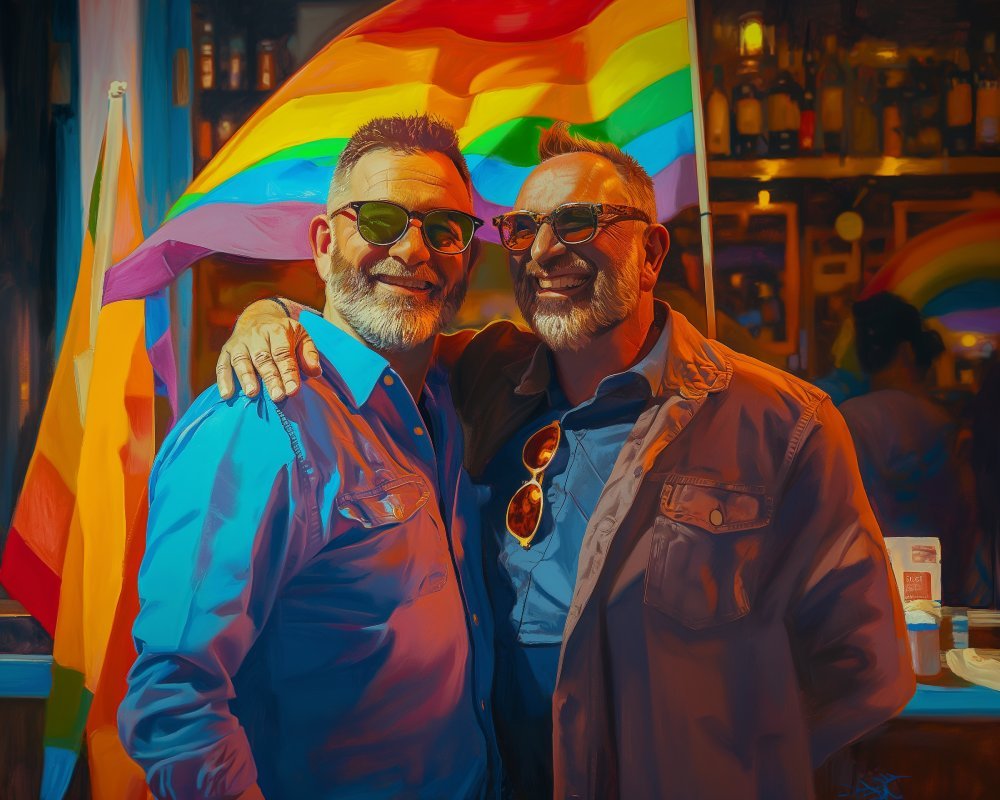
2. Defining Gay Parenting: A Broad Overview
When we speak of gay parenting, we’re referencing the act of raising children by individuals or couples who identify as lesbian, gay, bisexual, transgender, queer, or non-heterosexual in orientation. While the term “gay parenting” may traditionally conjure images of two fathers raising a child, it’s a broader umbrella. Indeed, lesbian mothers, bisexual co-parents, trans dads, or queer guardians are equally integral within the contemporary LGBTQ parenting landscape.
2.1. Why the Term “Gay Parenting” Can Be Limiting
Although widely used, “gay parenting” doesn’t encapsulate the entire range of LGBTQ caretakers. Over recent years, “LGBT parenting,” “LGBTQ parenting,” or “queer parenting” have emerged as more inclusive alternatives, acknowledging that:
- Lesbian Parenting: Women who love women might approach motherhood, pregnancy, or co-parenting differently from gay male couples.
- Transgender Parenting: A trans parent may face unique legal or medical considerations when forming or adopting a family.
- Queer Parenting: Some people reject binary labels, forging family structures outside “gay” or “straight” categories.
Nevertheless, for historical and cultural reasons, “gay parenting” remains a prominent phrase in mainstream discourse. Hence, while this blog frequently uses “gay parenting,” we aim to highlight the diversity within LGBTQ families.
2.2. The Scope of Gay Parenting Models
- Male Couples as Parents: Through surrogacy, adoption, or fostering, two men can become fathers. Some share biological paternity (via IVF and surrogacy), while others adopt.
- Female Couples as Mothers: Lesbian couples might rely on donor sperm or adoption. Sometimes one partner conceives, or they co-parent children from previous relationships.
- Single Gay Parents: An individual identifies as gay, lesbian, or trans, raising a child independently—perhaps via adoption, fertility treatments, or step-parenting.
- Co-Parenting Arrangements: Two or more LGBT individuals (or an LGBT person and a heterosexual friend) choose to raise a child together, blending resources in non-traditional family constellations.
2.3. Motivations and Pathways
Like many heteronormative families, LGBTQ individuals often yearn for parenthood—craving the joys of nurturing a child, sharing life lessons, and building a legacy. For gay men, surrogacy can be expensive and legally complex, so adoption or fostering might be more accessible. Lesbians may opt for home insemination with a known donor or clinical IVF. Trans folks explore options depending on their transition journey—some freeze sperm or eggs pre-transition. The diversity of routes reflects resilience and creativity, as these families find ways to overcome systemic barriers.
2.4. Cultural Shifts
In the 1970s, the idea of openly gay parents faced heavy social condemnation. Fast-forward to the 21st century: celebrities like Ricky Martin, Elton John, Jodie Foster, or Neil Patrick Harris normalized same-sex families, showcasing them in media. Public acceptance soared alongside legislative gains—particularly as scholars debunked myths that children of gay parents fare worse.
Conclusion: While the phrase “gay parenting” might conjure a singular image, it truly spans a wide array of family models, love stories, and daily logistics. The underlying theme is that orientation needn’t limit one’s capacity to nurture and guide a child. In the next sections, we’ll explore deeper contexts—from Same-Sex Parents and Their Children to the Gay Parenting Myths that linger.
Advertisement · Scroll to continue
Recommended
3. Historical Context of LGBTQ Parenting: From Stigma to Recognition
LGBTQ parenting didn’t emerge overnight, nor did it surface purely in the wake of same-sex marriage laws. In truth, LGBTQ individuals have parented children throughout history, albeit largely in the shadows. Understanding the historical shifts from stigma to growing acceptance clarifies how we arrived at modern discourses around gay parenting.
3.1. Hiding in Plain Sight
Prior to the 20th century, many LGBTQ parents entered heterosexual marriages, concealing their orientation. Divorce carried heavy stigma, so individuals feeling same-sex attraction often lived double lives. Their children might sense something different without having the societal language to decode it.

3.2. Early Cases and Custody Battles
In the mid-20th century, as divorces became more common, some gay or lesbian parents parted from opposite-sex partners. Courts usually deemed homosexuality morally unfit for child custody, frequently awarding custody to the heterosexual parent. Legal precedents in the 1970s sometimes reinforced these biases, prompting closeted gay parents to remain discreet to retain or regain custody.
3.3. Intersection with Feminism and Gay Liberation
The 1970s saw radical changes. Women’s liberation highlighted how single mothers, including lesbians, could challenge patriarchal norms of family. The Gay Liberation Movement, ignited post-Stonewall, propelled gay and lesbian communities to form “chosen families.” These alternative structures often included children from previous relationships, forging new contexts where the parent’s orientation was openly acknowledged.
3.4. Shifting Legal Reforms in the Late 20th Century
- Adoption and Fostering: Gradually, states or countries began permitting openly gay individuals to adopt or foster. Laws varied drastically, with some locales banning “homosexuals” from adoption. By the early 2000s, numerous U.S. states reversed such bans, though battles endured.
- Artificial Reproductive Technologies: Lesbians increasingly accessed sperm banks, while gay men researched surrogacy. Early trailblazers faced skepticism or outright hostility from medical and legal institutions, but persevered, establishing precedents.
3.5. 21st Century Recognition
As marriage equality debates accelerated, courts confronted whether same-sex couples could adopt jointly or be listed as co-parents on birth certificates. Rulings in favor of LGBTQ families spurred mainstream acceptance. Scenes of gay dads pushing strollers in suburban neighborhoods, or lesbian moms attending PTA, became less sensational. Popular culture reflected these changes, with shows like “Modern Family” featuring same-sex parents at the heart of the storyline.
3.6. Continued Evolution
Even in 2020s, controversies arise—like religious adoption agencies refusing to place children with same-sex couples, or governments instituting transphobic restrictions that hamper a trans parent’s legal recognition. Yet the overarching trend indicates greater acceptance than decades past. Each custody case, adoption success story, or surrogacy milestone builds upon the sacrifices of earlier generations who dared to assert their right to family.
Key Takeaway: From closeted marriages to contested custody battles, through feminist transformations and gay liberation, the tapestry of LGBTQ parenting has progressed from clandestine existence to a more recognized social phenomenon. While modern legal frameworks increasingly protect same-sex parents, these achievements rest on a foundation of historical struggle and resilience—offering context for the present-day phenomenon of “gay parenting” as legitimate, multifaceted, and worthy of respect.

4. Common Myths About Gay Parenting
Even as societies begin recognizing LGBTQ families, misconceptions persist. Gay Parenting Myths often stem from outdated biases or insufficient knowledge. By confronting these myths, we can illuminate the realities and demonstrate that gay parenting is, in most respects, quite similar to any other parenting scenario.
4.1. Myth #1: Children Need a Mother and a Father
Misconception: A traditional household with one male and one female parent is crucial for healthy child development.
Reality: Research consistently shows that parenting quality—love, stability, communication—matters more than the genders of the parents. Children raised by same-sex couples do just as well academically, socially, and emotionally as those from heterosexual households. Major professional organizations (APA, AAP) confirm no developmental disadvantage emerges from the absence of a “male or female role model.”
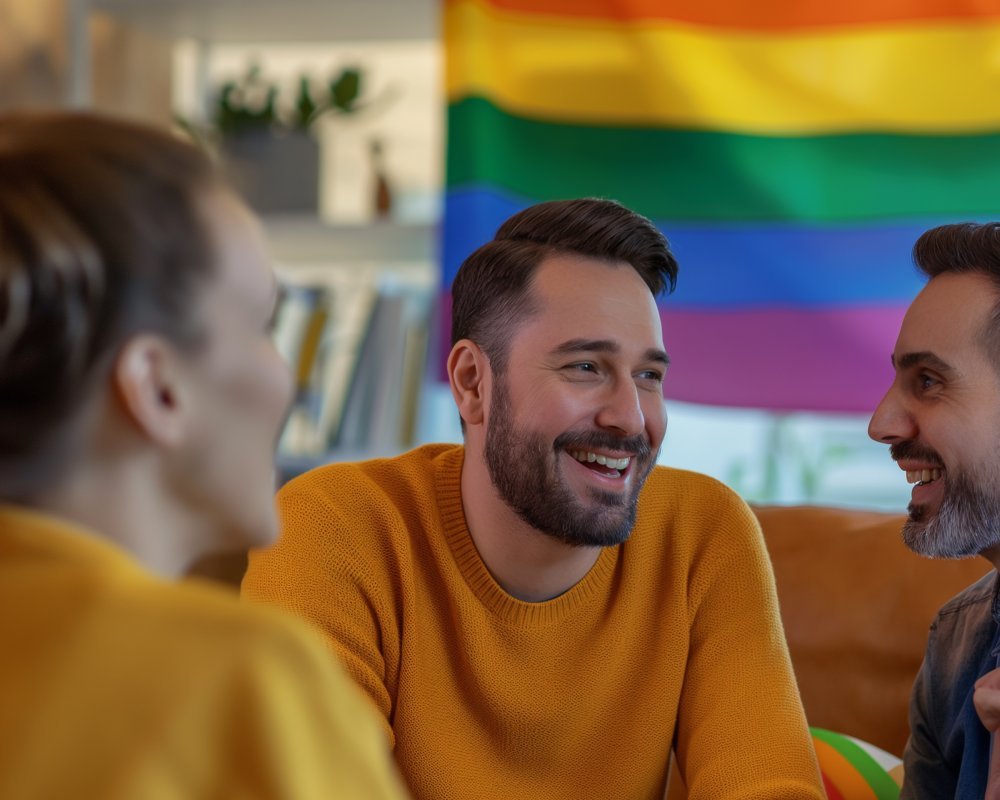
4.2. Myth #2: Children of Gay Parents Will Be Gay
Misconception: Kids are influenced or “turned gay” by having gay parents.
Reality: Sexual orientation is a complex interplay of genetic, hormonal, and social factors, not something “taught” like a hobby. In fact, most LGBTQ individuals were raised by straight parents, illustrating orientation doesn’t neatly pass from parent to child.
4.3. Myth #3: Gay Households Lack Stability
Misconception: Same-sex relationships are fleeting or less committed, so children suffer from instability.
Reality: Relationship longevity varies across sexual orientations. Many same-sex couples form enduring bonds, with marriage equality further stabilizing them. Regardless of orientation, couples can and do face challenges, but there’s no inherent reason to assume gay partnerships are less stable.
4.4. Myth #4: Gay Parents Are More Likely to Abuse Children
Misconception: Stereotypes linking homosexuality to deviant behavior lead some to fear higher rates of child abuse.
Reality: No credible evidence supports that sexual orientation correlates with child abuse. Pedophilia is a distinct pathology unrelated to sexual orientation. LGBTQ parents, like all parents, prioritize their children’s safety and well-being.
4.5. Myth #5: Children Miss Out on Gender Role Models
Misconception: Without both male and female parents, children won’t learn appropriate gender roles.
Reality: Children glean role models from extended family, friends, teachers, and mentors. Moreover, many psychologists argue strict adherence to “traditional gender roles” can limit a child’s personal growth. Seeing parents collaborate, share tasks, and express emotions freely may foster well-rounded children.
4.6. Myth #6: Society Will Bully These Children
Misconception: Having gay parents dooms a child to relentless bullying or social ostracism.
Reality: While teasing can occur, especially in less tolerant regions, supportive schools and protective parents mitigate these risks. Also, bullying is not an inevitability—children with gay parents often find acceptance among peers, especially as cultural attitudes shift.
Conclusion: These gay parenting myths crumble when met with empirical research and real-life accounts. Children in LGBTQ families aren’t “deprived” or “confused.” Instead, they grow up experiencing variations of love, discipline, laughter, challenges, and triumph—just like any family. Recognizing and debunking these myths is vital for forging a society where LGBTQ parents and their children flourish free of baseless stigma.
5. Same-Sex Parents and Their Children: Family Structures and Dynamics
Same-sex parents—whether two mothers, two fathers, or combinations of nonbinary and trans parents—create rich family dynamics that blend universal parenting tasks with unique cultural contexts. This section delves into the everyday life, emotional climate, and social aspects of children raised in these households.
5.1. Family Constellations
- Two-Mom or Two-Dad Households: The quintessential image of same-sex parenting involves a married or partnered couple living in a shared home, co-parenting from birth or adopting/fostering.
- Blended Families: A child might have one parent from a prior heterosexual relationship, plus a newly out spouse—resulting in step-parents or half/step-siblings.
- Multi-Parent Arrangements: Some families opt for co-parenting among three or more adults. For example, a lesbian couple might share parenting responsibilities with a male friend donor who remains involved.
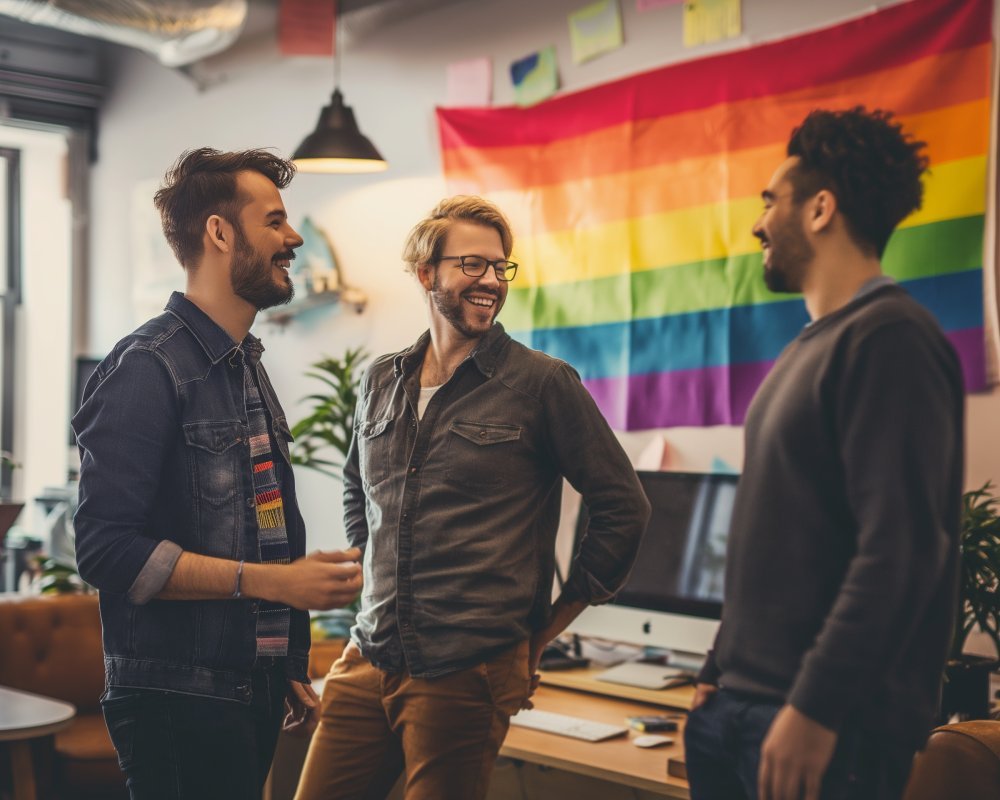
5.2. Daily Life and Division of Labor
- Household Roles: Chores, cooking, or childcare tasks typically split based on personal interests or schedules, not rigid gender roles. This can teach children that responsibilities aren’t inherently “male” or “female.”
- Emotional Warmth: The desire to adopt or conceive often indicates these parents deeply cherish the notion of raising children. Indeed, studies find children of same-sex parents often report high levels of emotional security and parental involvement.
5.3. Communication and Identity
- Open Dialogue: Many same-sex parents prioritize honest discussions about family structure, ensuring kids can handle questions from peers. Terms like “Mommy and Mama” or “Daddy and Papa” might be used to distinguish each parent.
- Role of Extended Family: Acceptance from grandparents, aunts, uncles, or cousins can range widely. Affirming extended families provide normalcy, while unsupportive relatives introduce tension.
5.4. Social Experiences for the Children
- Peer Reactions: In tolerant communities, classmates find it a non-issue that a child has two dads or two moms. In more conservative environments, the child might face teasing or curiosity. Prepared parents often teach children strategies for answering questions or deflecting negative comments.
- Cultural Participation: Families may attend Pride events together or volunteer at LGBTQ organizations, integrating activism into everyday life. Children observe resilience and solidarity, shaping their worldview on inclusion.
5.5. Educational Context
- Schools’ Role: Progressive schools incorporate lessons or books featuring same-sex families, normalizing their presence. Conversely, some institutions or teachers remain ignorant or resistant.
- Parent-Teacher Communication: Same-sex parents might need to clarify they’re both legal guardians, or ensure teachers adapt language to “parents/guardians” vs. “mother/father.”
5.6. Psychological Findings
Research by the American Psychological Association indicates that the children of same-sex parents generally show healthy development—on par academically, psychologically, and socially with peers from different family structures. Parenting qualities (warmth, consistency) are the decisive factors in children’s well-being, overshadowing parental orientation.
Conclusion: Same-sex parents and their children represent a mosaic of household arrangements, daily routines, and identity affirmations. While they confront occasional prejudice, families find strength in open communication, supportive extended communities, and flexible gender role assumptions. Ultimately, from bedtime stories to soccer practice pickups, life in these households is a testament to how love, commitment, and stable parenting surpass traditional expectations of “mother plus father.”
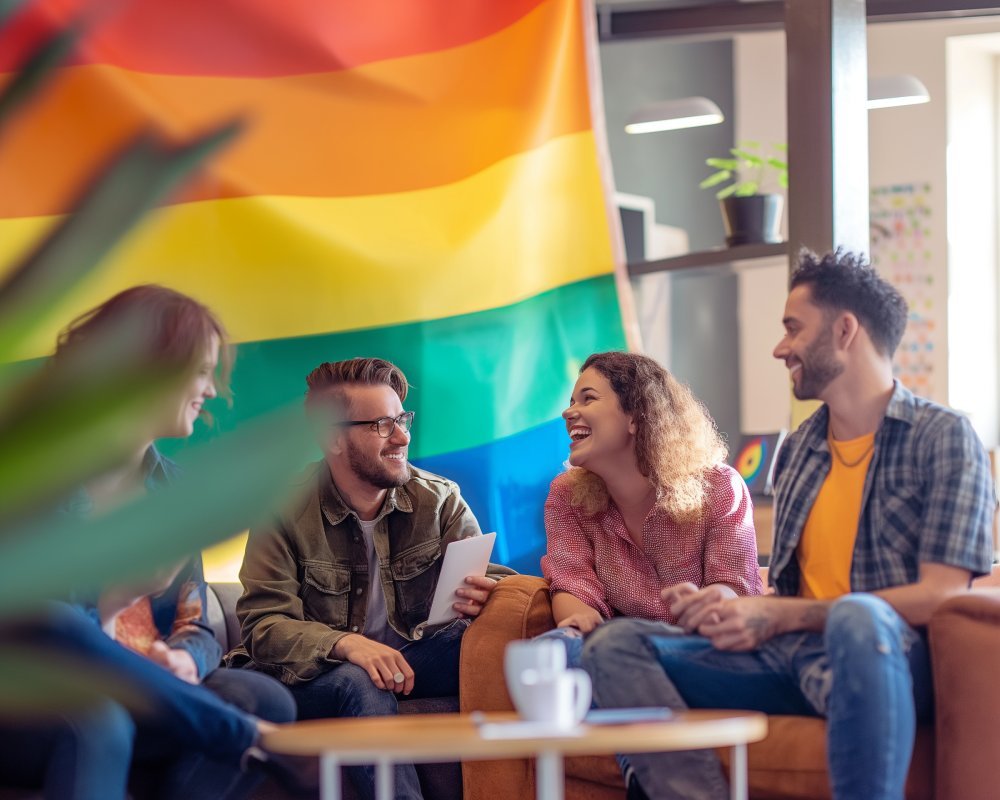
Advertisement · Scroll to continue
Recommended
6. What’s It Like to Have Gay Parents? Child Perspectives and Real Stories
Beyond adult voices, the truest measure of “What is Gay Parenting Like?” often surfaces in the accounts of children themselves. Their insights—whether comedic, mundane, or deeply personal—reveal how having gay parents can shape identity, relationships, and worldview.
6.1. Voices from Real-Life Experiences
- Aiden, Age 12: “I used to think everyone had two dads. My friend in kindergarten told me that was weird, so I asked my dads, and they explained different family types. I just thought it was normal, because, well, it was my normal.”
- Maria, Age 17: “My moms taught me to stand up for myself. They faced so much prejudice when adopting me. When kids question if I have a dad, I just say I have two strong moms, that’s all. Sometimes they’re curious, but most of my friends think it’s cool.”
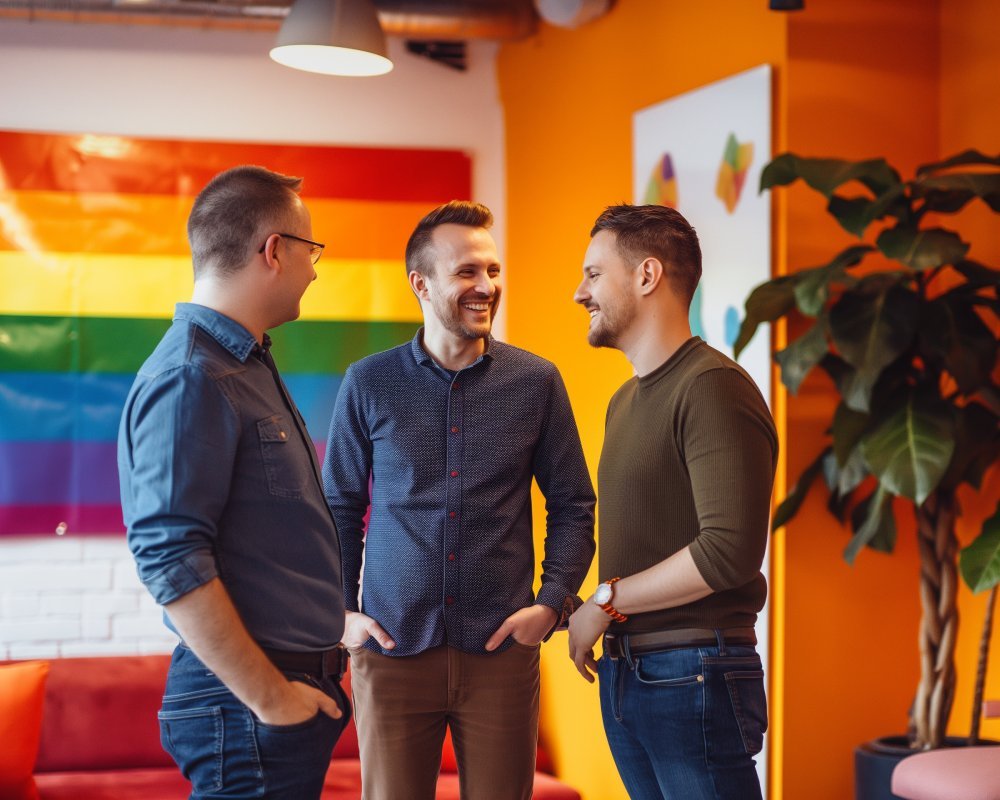
6.2. Social Interactions
- Questions from Peers: Children of LGBTQ parents sometimes handle queries like, “Why don’t you have a dad?” or “How did your moms have you?” Early on, parents can coach kids on straightforward answers, helping them navigate potential awkwardness.
- Sense of Diversity: Many kids note they feel more open-minded about differences. Observing their parents challenge social norms fosters empathy and acceptance of other marginalized groups.
6.3. Emotional Security and Possible Stigma
- Emotional Support: Kids often describe their LGBTQ parents as deeply invested in communication, particularly to prepare them for external biases. They feel a strong sense of closeness and trust.
- Encountering Bullying: Not all experiences are positive. In conservative areas, some children face taunts. However, these negative episodes can be mitigated by supportive school climates or parental reassurance.
6.4. Coming to Terms with Orientation
Children may realize that society sees their family as “different,” but many quickly learn that love defines a family more than gender composition. Some even become youthful advocates, correcting misinformation in classrooms. This fosters a sense of resilience and sometimes activism.
6.5. Growing Up with Gay Parents’ True Stories
- Case Study—Evan Wolfson: A prominent marriage equality advocate, Wolfson came from a supportive environment. Though not raised by gay parents, his empathy for children in same-sex households spurred activism. Meanwhile, actual children of gay couples, once grown, have testified in court to confirm they’re healthy, loved, and well-adjusted, like any other child.
- Testimonies in Media: Documentaries like “Gayby Boom” or “Daddy and Papa” highlight personal journeys. Some reflect how tension with extended family sometimes overshadowed childhood. Others found acceptance in local communities that welcomed them wholeheartedly.
6.6. Overlapping Identities
Children of color or those with religious backgrounds might encounter multiple layers of identity: living in a predominantly white neighborhood with two Black dads, or practicing a faith that disapproves of homosexuality. Their narratives underscore the complexities of intersectionality.
Conclusion: What’s it like to have gay parents? In short, it varies—like any upbringing. Children appreciate the same familial warmth, daily routines, and boundary-setting as peers, albeit with an extra layer of potential stigma or curiosity from outsiders. Most children express gratitude for their family’s open-mindedness, acknowledging that prejudice comes from ignorance, not from any deficiency in their parents’ love or ability to care.
7. Growing Up with Gay Parents: What Is the Big Deal?
The phrase, “Growing up with gay parents: what is the big deal?” resonates on two levels—either as an inquiry from those who question if it’s truly distinctive, or as a rhetorical statement implying it shouldn’t be a big deal at all. The reality is that it can be simultaneously ordinary (like any family) and socially significant.
7.1. Ordinary Moments vs. Public Perception
- Daily Life: Mornings might entail a parent making breakfast, a child rushing for the school bus. Evenings revolve around homework help, family dinners, or bedtime stories. In day-to-day routine, orientation fades into the background.
- Social Spotlight: Yet, stepping into public spheres—school events, medical appointments—can draw questions or double-takes if people notice “two dads” or “two moms.” The child might become a de facto spokesperson, explaining their family’s structure.

7.2. Psychological Studies
Numerous academic projects conclude that children with gay parents show no heightened risk of negative outcomes. Contrarily, some kids even display above-average empathy due to open conversations about diversity. If any “big deal” emerges, it’s typically from external prejudice, not from inherent family deficiencies.
7.3. The Role of Media Stereotypes
Media coverage focusing on “the novelty” of gay families can inadvertently sensationalize or fetishize these households, leading to questions like, “Aren’t the kids confused?” Over time, comedic or dramatic portrayals (e.g., Modern Family) balanced that by showing same-sex parents engaging in the same comedic parenting mishaps as everyone else.
7.4. “Big Deal” in Certain Regions or Cultures
In areas where acceptance lags—like rural towns or conservative religious communities—having gay parents can be more challenging. The child may be teased or overshadowed by moral judgments from neighbors. This is where local LGBTQ support groups can step in, connecting families for mutual support.
7.5. Pride in Visibility
Many youths raised by gay parents champion their families’ uniqueness. They attend Pride parades, speak up in class about LGBT parenting, or join activism for marriage equality. For them, the “big deal” is a sense of pride: they see how their parents overcame stigma to form a nurturing home.
7.6. Conclusion: Normalcy with Nuances
Ultimately, growing up in an LGBTQ household is both mundane (like any child’s life) and extraordinary (given societal contexts). “What is the big deal?” becomes an invitation to question why society fixates on orientation. The more mainstream acceptance grows, the less of a “big deal” it should become—except in celebrating diverse families that enrich our communities.
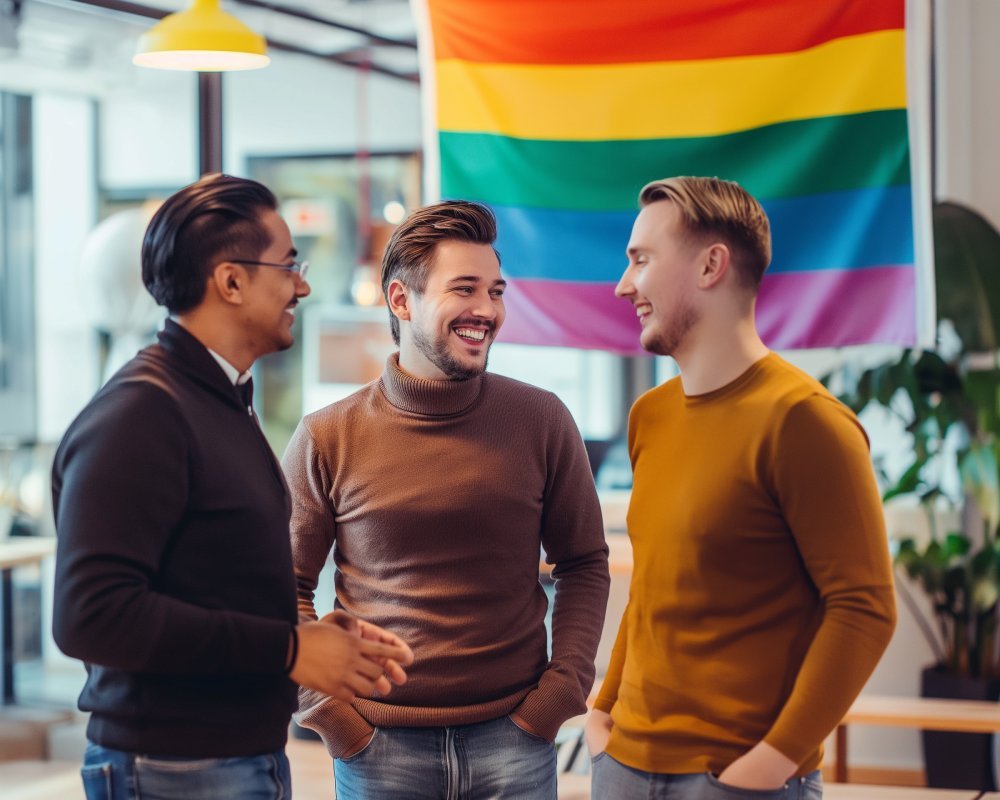
8. The Daily Life of Gay Parents: Balancing Home, Work, and Community
What does a typical day look like when gay parents are at the helm? Beyond policy debates and symbolic victories, the everyday rhythm of an LGBTQ household reveals a tapestry of ordinary tasks, shared responsibilities, and occasional confrontations with bias.
8.1. Waking Up to Routine
- Morning Chaos: Alarms beep. Maybe Dad 1 preps lunches while Dad 2 helps with hairdos or checks last-minute homework.
- Household Chores: One parent may handle laundry, another shops for groceries. Or chores rotate. Freed from strict gender roles, tasks are often split by preference or schedule.

8.2. Professional Lives and Childcare
- Working Parents: As with hetero couples, both might work full-time, juggling daycare pickups or after-school programs. Some parents structure flexible shifts to reduce childcare costs.
- Stay-at-Home LGBTQ Parents: Alternately, one might stay home. This can sometimes puzzle outsiders who assume gay men, for instance, wouldn’t want child-centered lifestyles. Yet many relish full-time parenting.
8.3. Community Engagement
- PTA and School Functions: LGBTQ parents show up for parent-teacher nights or bake sales, forging relationships with other families. Their presence normalizes the idea that families differ but share common ground: children’s well-being.
- Extracurriculars: Sports practices, music lessons, or art clubs fill afternoons. Gay parents might watch from the sidelines, cheering just as fervently as any other parent.
8.4. Dinner Time and Family Bonding
- Meal Prep: Evening routines might revolve around a communal dinner. Some families incorporate cultural heritage in recipes, or they might share silly stories from each person’s day.
- Homework Supervision: Checking math problems or reading assignments is universal. Sometimes, discussions about personal identity or LGBT history organically surface if a child’s lesson references social justice.
8.5. Social Circles
- Friend Networks: Many gay parents cultivate friendships with other queer families, hosting playdates or holiday gatherings. This fosters a supportive environment where kids see other families like theirs.
- Allies: Straight friends also integrate seamlessly, especially in areas with open-minded communities. Occasionally, new acquaintances might express curiosity (“How do you handle questions about having two dads?”), triggering gentle educational moments.
8.6. Weekend Adventures
- Leisure Time: Hiking, museum visits, or watching a new movie—these weekend pursuits rarely differ from heterosexual families, aside from the extra caution in some areas to ensure welcoming spaces.
- Activism: Many LGBTQ parents incorporate activism or volunteering (e.g., Pride planning committees, local charities) into their lives. Children might tag along, gleaning early lessons in civic engagement.
In Essence: The daily life of gay parents mirrors that of any household—busy mornings, attempts to keep up with chores, and cherishing family moments. The biggest distinctions often emerge not from internal dynamics but from how the outside world perceives them. Over time, more communities understand that love and dedication define a family, not orientation. In the end, gay parents’ daily routines prove that parents are parents, with shared joys, stresses, and triumphs.
9. Gay Parenting in the United States
In the United States, the conversation around LGBT parenting has transitioned dramatically over the last few decades. While the U.S. stands out for its passionate culture wars over family values, it also fosters robust pockets of acceptance. Let’s explore the complexities of Gay Parenting in the United States—from legal frameworks to social acceptance.
9.1. Legal Patchwork: State vs. Federal Dynamics
- Pre-Obergefell: Prior to the 2015 Supreme Court ruling legalizing same-sex marriage, each state had its own stance on adoption or second-parent adoption for same-sex couples. Some states allowed joint adoption, others refused.
- Marriage Equality Impact: Post-Obergefell, same-sex couples can marry in all 50 states. Marriage recognition generally simplifies adoption, spousal rights, and birth certificate procedures. However, certain states attempt to pass “religious exemption” laws undermining these protections.
- Surrogacy Laws: Surrogacy regulations vary drastically by state. Some states are surrogacy-friendly (California), while others ban or heavily restrict it. Gay male couples seeking surrogacy often travel or relocate to surrogacy-friendly jurisdictions.
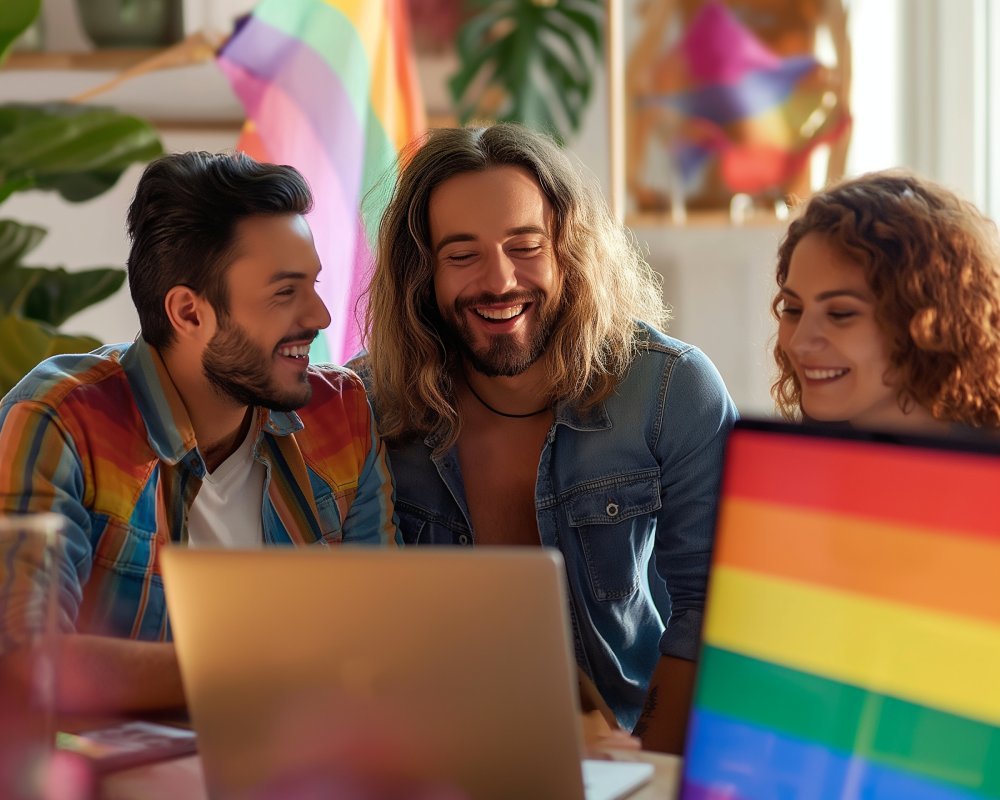
9.2. Adoption and Foster Care
- Agency Discrimination: While many states prohibit adoption agencies from discriminating based on sexual orientation, some still allow faith-based agencies to refuse placements with LGBTQ parents. Lawsuits and legislative battles continue to shape this frontier.
- Foster Parenting: A large number of LGBTQ individuals choose fostering. Agencies in progressive areas actively recruit gay foster parents, acknowledging they bring stable, loving homes to children in need.
9.3. Cultural Acceptance Across Regions
- Urban vs. Rural: In big cities like San Francisco, New York, or Seattle, gay parents appear increasingly normalized. Conversely, in rural Bible Belt towns, families might face quiet ostracism or church-based condemnation.
- Political Climate: Red states often harbor stronger anti-LGBT rhetoric among conservative factions, whereas blue states champion broader inclusivity. However, even conservative states can host inclusive enclaves, and vice versa.
9.4. Healthcare and Educational Landscape
- Healthcare Access: LGBTQ parents generally rely on employer benefits or social programs. The Affordable Care Act’s non-discrimination clause aided coverage expansion, but ongoing challenges remain for trans parents or unique fertility treatments.
- School Curricula: Some districts adopt LGBTQ-inclusive textbooks, referencing families with two moms or two dads. Others face “parental rights” pushback limiting LGBTQ references in school. Tensions revolve around whether discussing same-sex families is “political” or simply reflective of reality.
9.5. Community Resources
- Local Support Groups: Nonprofits like Family Equality or PFLAG chapters provide networking, legal guidance, and emotional support for gay parents. They host events, produce resource guides, or lobby at the statehouse.
- Online Platforms: Facebook groups and specialized forums let gay parents across states share experiences. This digital camaraderie proves invaluable, especially for those in conservative or remote locales.
9.6. Future Outlook
Given the U.S.’s polarized climate, gay parenting remains a contested domain—progress coexists with reactionary measures. Still, an enduring trend sees more public acceptance, even in historically conservative areas. With each generation, the sight of two dads or two moms at school pickups appears less remarkable, highlighting how swiftly norms can shift.
Conclusion: In the U.S., gay parenting thrives within a dynamic interplay of federal rights, state-level quirks, and cultural variation. While marriage equality alleviated many legal hurdles, localized battles continue. Yet the overarching narrative is one of resilience and incremental acceptance: LGBTQ families are here, raising children, weaving themselves into the American fabric—both defining and defying tradition.

10. LGBTQ Parenting in Europe: Policies, Acceptance, and Ongoing Challenges
Across Europe, LGBTQ parenting landscapes vary widely. Some nations pioneer LGBTQ protections, while others maintain conservative stances. Let’s investigate LGBTQ Parenting in Europe, focusing on legal frameworks, societal attitudes, and the nuanced mosaic bridging progressive hubs and resistant corners.
10.1. Marriage and Adoption Rights
- Front-Runners: The Netherlands, Belgium, Spain, and the Nordic countries (Sweden, Denmark, Norway) recognized same-sex marriage and LGBTQ adoption early. These countries frequently top global rankings for inclusive laws, allowing joint adoption for same-sex couples.
- Civil Partnerships: Nations like Germany initially offered “registered partnerships” before extending full marriage. In the UK, civil partnerships emerged in 2005, evolving into full marriage equality in 2014 (England/Wales) and 2019 (Northern Ireland).
- Eastern Europe: Conservative or nationalist sentiment stymies equality. Places like Poland, Hungary, or Romania resist same-sex marriage or robust anti-discrimination. LGBTQ parents might face restricted adoption, or legal recognition might be nonexistent.
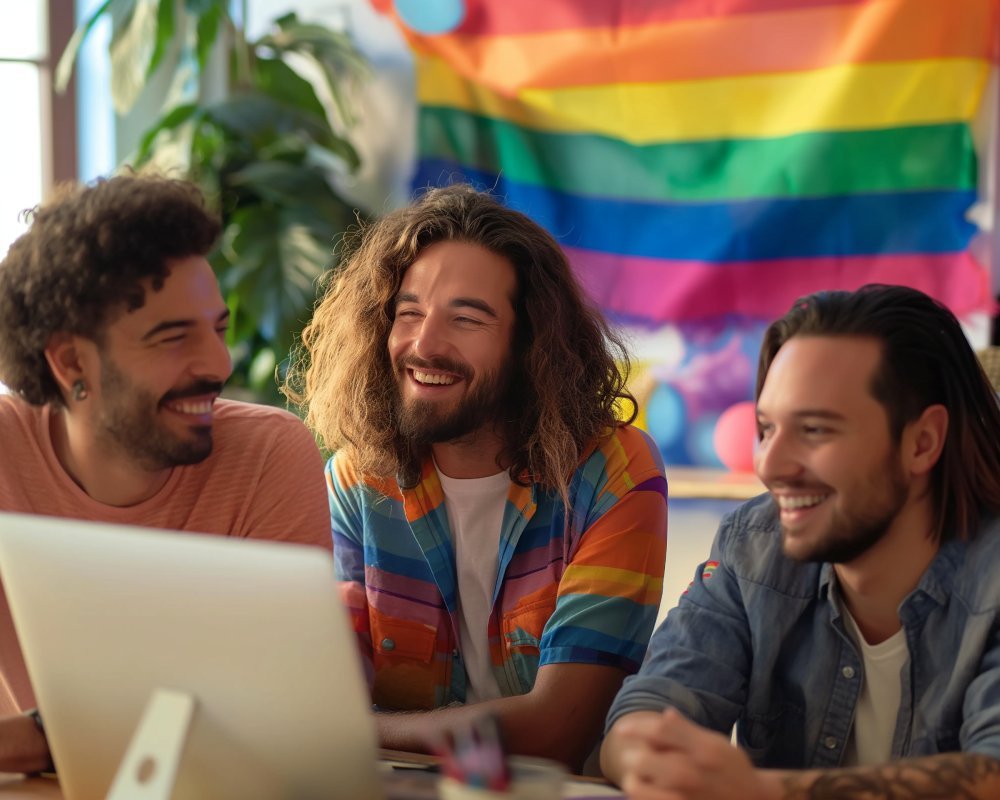
10.2. Surrogacy and Assisted Reproduction
- Differing Regulations: Surrogacy is outlawed or heavily restricted in many European nations (e.g., France, Germany), prompting couples to seek surrogacy abroad. IVF for lesbian couples is accepted in some countries (Sweden, Spain) but disallowed in others (Italy).
- Cross-Border Complexities: A child born via surrogacy in the U.S. might not automatically receive parental recognition if the European parent’s home country forbids surrogacy. Court battles ensue, testing EU mandates on free movement and family reunification.
10.3. Social Attitudes and Parenting Acceptance
- Secular vs. Religious Influences: Countries with strong secular traditions (e.g., the Netherlands) exhibit broad acceptance of LGBTQ families. Meanwhile, predominantly Catholic or Orthodox states (Poland, Russia) can foster public hostility toward gay parenting.
- Generational Differences: Younger Europeans typically show higher tolerance, with Pride events proliferating in major cities. However, older generations or rural areas may remain skeptical or overtly homophobic.
10.4. EU-Level Protections
- Anti-Discrimination: The EU’s Charter of Fundamental Rights discourages discrimination based on sexual orientation. Yet family law remains largely under national jurisdiction.
- Strasbourg Rulings: The European Court of Human Rights occasionally rules in favor of same-sex parents (e.g., adoption recognition), setting precedents. Compliance, however, depends on each member country’s willingness to implement judgments.
10.5. Community and Cultural Life
- Pride Festivals: London, Madrid, Berlin, and Amsterdam Pride are massive cultural gatherings celebrating LGBTQ families, among others. Eastern cities like Warsaw or Belgrade see smaller or more contested events.
- Support Organizations: Europe hosts various NGOs championing LGBTQ parenting rights: ILGA-Europe, NELFA (Network of European LGBT Families Associations), etc. These groups share resources, coordinate legal challenges, and facilitate cross-border solidarity.
10.6. Broader Challenges Ahead
- Rise of Populism: Right-wing populist movements across Europe sometimes scapegoat LGBTQ families, claiming they undermine “traditional” values.
- Refugee and Migrant Families: LGBTQ refugees fleeing persecution face additional hurdles, including acceptance for their children. Europe’s asylum frameworks are inconsistent, overshadowing the quest for stable family life.
Conclusion: LGBTQ Parenting in Europe reveals both success stories (Northern and Western Europe leading the way) and persistent friction (Eastern Europe’s reticence, surrogacy controversies). The continent’s diverse legal tapestry ensures no single approach to gay parenting prevails. Yet a pan-European trend toward acknowledging and protecting LGBTQ families continues, anchored by grassroots activism and evolving jurisprudence.
11. Lesbian Parenting: Unique Dimensions for Women-Loving-Women Families
Among the spectrum of gay parenting, lesbian parenting stands out with particular nuances shaped by women’s experiences, reproductive options, and the interplay between lesbian identity and societal expectations. This section spotlights the complexities, joys, and intricacies of two-mom households and other forms of lesbian-led families.
11.1. Pathways to Motherhood
- Donor Insemination: Lesbians commonly use sperm donors, ranging from anonymous donors at fertility clinics to known donors who might maintain some role in the child’s life.
- Reciprocal IVF: One partner’s egg is fertilized and carried by the other partner, allowing both women to share in biological and gestational roles.
- Adoption or Fostering: Many pursue adoption, fostering vulnerable children, or step-parent adoption if one partner already has a child from a previous relationship.

11.2. Societal Biases and Stereotypes
- Double Discrimination: Women already face sexism; identifying as lesbian adds another layer. Some fear they’ll be seen as unfit mothers because they “lack a father figure.”
- Masculinity Myths: Outsiders sometimes insist kids need a “male role model,” ignoring the wide network of male relatives or friends who might fill that role if desired.
11.3. Balancing Identities
- Intersection with Feminism: Many lesbian mothers connect to feminist values—raising children with egalitarian perspectives on gender roles. Chores aren’t assigned “mom vs. dad.” Instead, tasks are distributed per personal preference or skill.
- Motherhood Pressure: Women in patriarchal societies are often measured by maternal roles. For lesbians, questions can arise: “Which one is the real mom?” or “Who gave birth?” They might challenge these invasive inquiries, affirming that both are “real moms.”
11.4. Family Support Networks
- Lesbian Mom Groups: Online forums or in-person gatherings (like Mombian communities) let them share experiences about conception, baby care, or dealing with homophobic relatives.
- Navigating Extended Families: Accepting grandparents, aunts, or cousins can foster a broad support circle. Rejection from any side means forging chosen-family networks—friends, fellow lesbian parents, or LGBTQ community centers that fill the gap.
11.5. Children’s Perspectives
Kids of lesbian mothers often mention seeing a balanced approach to household tasks, plus an environment encouraging emotional openness. They might find it normal to see two maternal figures but sometimes face questions from peers. Encouraging communication and confidence helps them respond positively.
11.6. Policy Gaps
Despite marriage equality in many regions, some places fail to recognize both mothers equally unless they undertake stepparent adoption. Bureaucratic red tape can complicate birth certificates or hospital forms. Activists persist in pushing for fully recognized parental rights from birth.
Conclusion: Lesbian parenting merges universal maternal care with the unique vantage of women who challenge heteronormative structures. Whether conceiving via IVF, adopting, or co-parenting, these mothers demonstrate resilience in forging families that blend love, equality, and empowerment. Their experiences underscore the broader principle that children thrive on affection, security, and guidance—attributes that transcend gender or orientation.
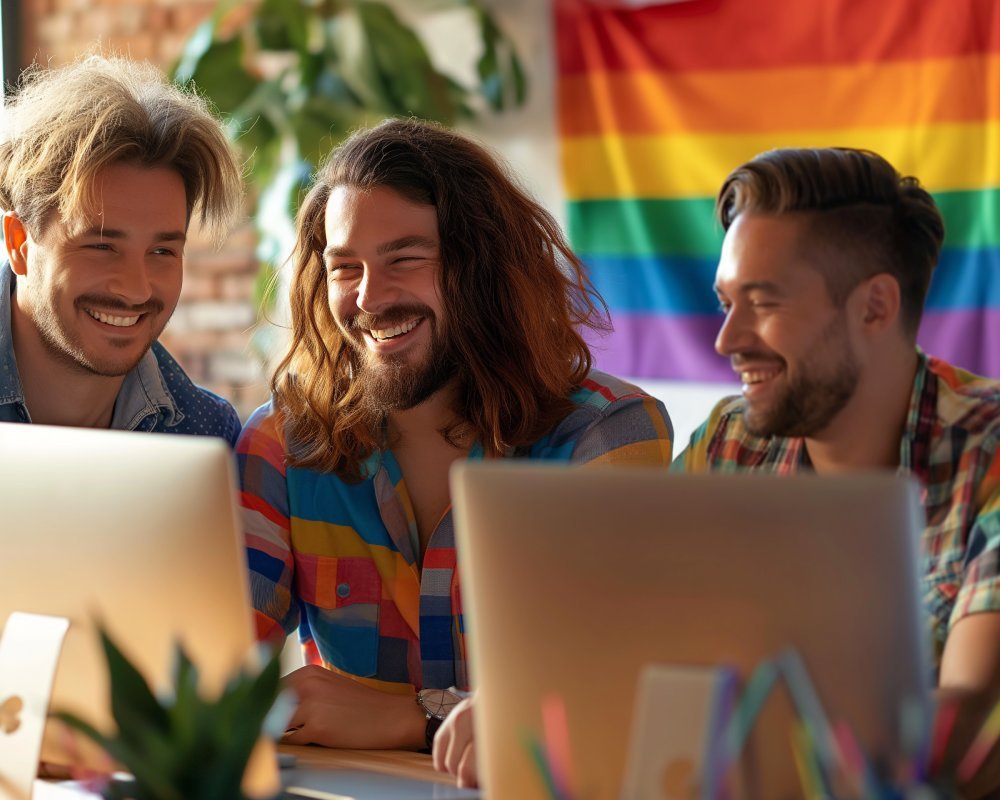
12. Transgender Parenting: Redefining Gender Roles and Family Models
Transgender individuals who are parents or aspire to parent highlight the fluidity of gender roles within families. Their experiences defy outdated assumptions about who can father or mother a child. What Is Transgender Parenting Like? This question reveals a fascinating intersection of identity, biology, and social acceptance.
12.1. Transition Before or After Having Children
Trans parents might have children prior to transitioning. For instance, a trans woman may have fathered children while presenting as male. Post-transition, they reevaluate familial roles, pronouns, and relationships with children. Conversely, trans men or women might choose to become parents after medically transitioning, pursuing fertility options or adopting.
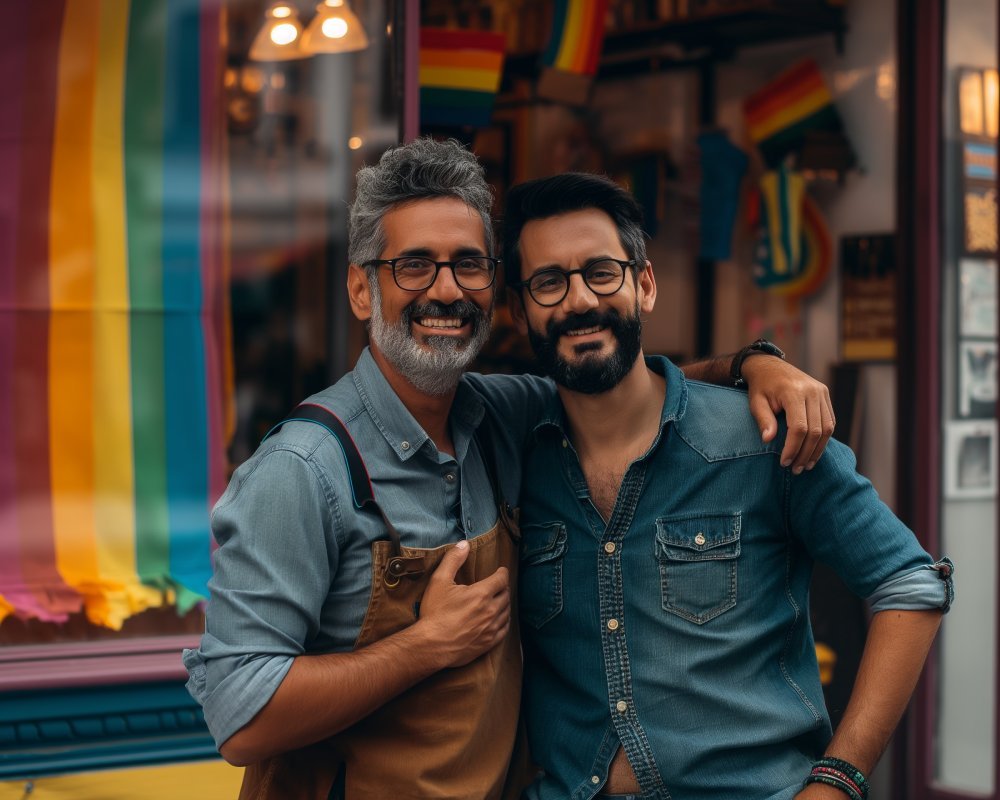
12.2. Legal and Medical Hurdles
- Name/Gender Marker Changes: Bureaucratic forms often refer to “mother” and “father,” ignoring that a trans father may also be the gestational parent. Many push for gender-neutral terms like “parent” or “birth parent.”
- Healthcare Access: Trans individuals sometimes face discrimination in fertility clinics or postpartum care. Doctors may lack training in trans reproductive health. Ensuring respectful treatment is a recurring battle.
12.3. Social Reactions
- Extended Family: Relatives may struggle if they previously knew someone as “Uncle James” who transitions to “Aunt Jamie.” Acceptance levels vary, affecting children’s comfort in extended gatherings.
- Public Spaces: Playground interactions can lead to awkward questions if a trans dad is visibly pregnant or a trans mother doesn’t fit conventional maternal imagery. Affirming communities alleviate the stress, but prejudice remains a risk.
12.4. Parenting Approaches
- Open Communication with Children: Explaining one’s transition to kids depends on age. Younger children often adapt swiftly; older ones might ask detailed questions about changes in appearance or pronouns.
- Teaching Acceptance: Trans parents frequently model inclusive values, teaching children compassion for all forms of diversity. This can cultivate an environment of empathy at home.
12.5. Co-Parenting Dynamics
When a transitioning individual is part of a previously heterosexual union, divorces or custody disputes can arise. Some ex-partners contest custody, claiming the child might be “confused.” Courts that rely on stereotypes can complicate the trans parent’s fight for equal rights. Activist groups lobby for clearer guidelines ensuring fair judgments.
12.6. Evolving Visibility
Media representation is starting to highlight trans parents (e.g., documentaries, social media influencers). This fosters broader understanding that trans identities aren’t incompatible with parenthood. Additionally, trans-run support groups share tips—like chest feeding for trans men or postpartum mental health for trans women—normalizing varied paths.
Overall: Transgender parenting exemplifies how families can flourish once rigid gender definitions are dismantled. While prejudices persist, trans parents form loving, supportive environments for their children, embodying resilience and forging new narratives about gender and care. As society learns to embrace these possibilities, trans parents continue challenging the conventional blueprint of “mom and dad,” championing authenticity over assigned norms.
13. Queer Parenting: Expanding Concepts of Family Beyond Labels
Amidst the categories of gay, lesbian, or trans parenting lies an entire spectrum of “Queer parenting”—a broad term encompassing families that defy simple orientation-based descriptions. By challenging binary thinking about gender and sexuality, queer parents reimagine family structures on their own terms.
13.1. What Is Queer Parenting?
- Inclusivity: “Queer” can encompass those identifying as pansexual, genderqueer, non-binary, or asexual, among others. They might reject mainstream definitions of “mom” or “dad,” using neutral or creative titles like “Mapa,” “Zaza,” or “Parent.”
- Intersection of Gender and Sexuality: Queer parents may not identify as strictly gay or lesbian, or they may fluidly shift identities over time. Their approach to childrearing emphasizes adaptability, mutual respect, and fluid identity roles.
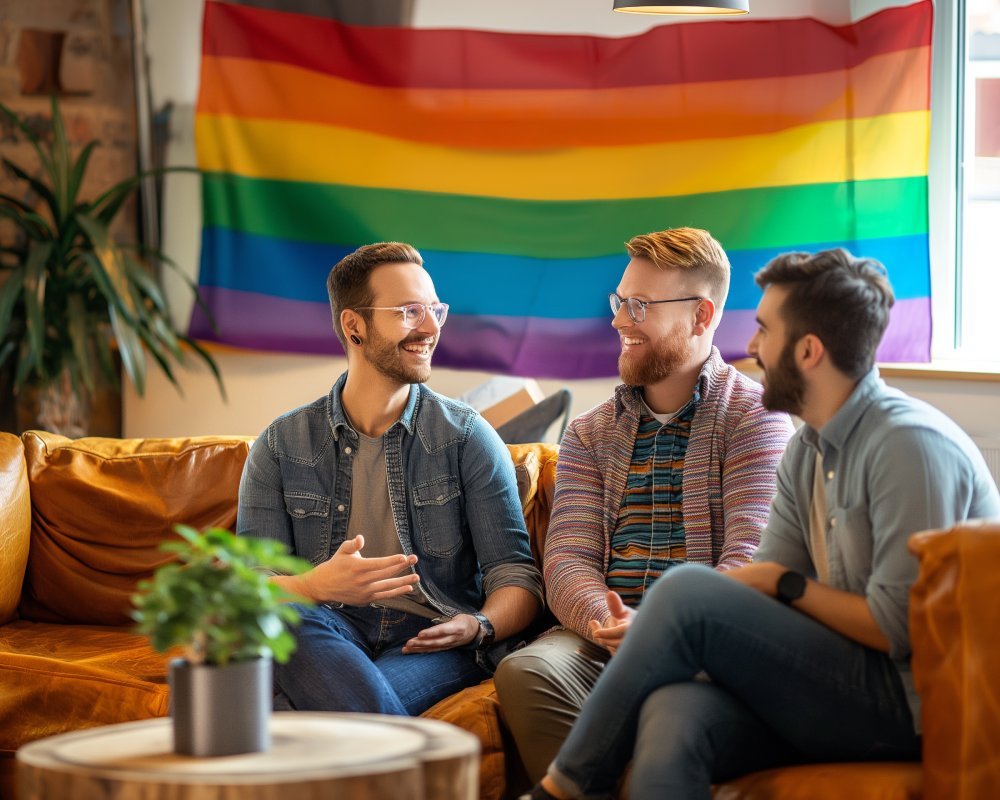
13.2. Beyond the Nuclear Model
Queer parenting often incorporates alternative family constellations: polyamorous arrangements (three or more consenting adults co-parenting), multi-generational houses, or friend-based “co-parenting.” This subverts the two-parent norm, forging supportive circles for the child’s growth.
13.3. Deconstructing Gender Norms
- No Set Mom-Dad Roles: Queer households might distribute caregiving tasks purely based on interest or skill, rather than matching society’s “motherly” or “fatherly” stereotypes.
- Fluid Parenting Presentation: A non-binary parent might switch between masculine and feminine expressions or use they/them pronouns, showing children that self-expression is personal and dynamic.
13.4. Children’s Experiences
Kids in queer-led homes often witness broad emotional ranges and flexible identity expressions. They learn that gender isn’t fixed or solely about “blue vs. pink.” Instead, it’s about authenticity. Some children find it liberating, though external misunderstanding can cause occasional confusion.
13.5. Societal Response
While progressive communities might embrace these families, more conservative or religious factions can be perplexed or condemning. Queer parents often craft alliances with like-minded families, ensuring children see peers in similar familial structures.
13.6. Cultural Shifts
As younger generations claim queer identities and embrace fluidity, the concept of “queer parenting” is becoming more visible. Parenting blogs, social media groups, or literature highlight experiences that don’t conform to gay-straight binaries. Healthcare providers, legal systems, and child services adapt slowly, spurred by activism demanding inclusive language and documentation.
Conclusion: Queer parenting isn’t just about orientation but an entire philosophy that challenges heteronormative and cisnormative assumptions. By centering authenticity, choice, and fluidity, these families model how love and commitment can transcend conventional boundaries. Their existence underscores the broad possibilities under the LGBTQ+ umbrella, reminding the world that parenthood is as diverse as humanity itself.

14. Pathways to Parenthood: Adoption, Surrogacy, IVF, and More
For LGBTQ individuals, the journey toward having children often requires navigating additional steps—be it legal, medical, or financial—compared to many heterosexual couples. This section outlines the pathways to parenthood that gay, lesbian, trans, and queer parents commonly choose, and the complexities each route entails.
14.1. Adoption
- Public vs. Private Agencies: Prospective LGBTQ parents may adopt via government-run foster care systems or private agencies. Some agencies openly welcome LGBTQ adoptive parents; others impose discriminatory policies.
- International Adoption: Rarely an option nowadays due to varying international regulations or explicit bans on same-sex adoptive parents.
- Challenges: Homophobic biases, religious exemptions, or complicated homestudy requirements. Yet many success stories prove adoption is a significant gateway for LGBTQ folks to form families.

14.2. Fostering
- Foster-to-Adopt: In many locales, fostering stands as a route to adopt a child. LGBTQ fosters can offer stable homes for at-risk children.
- Social Impact: This path helps reduce the number of older children stuck in care. Researchers find that LGBTQ fosters are more open to adopting children with special needs or older kids, providing them a nurturing environment.
14.3. Surrogacy
- Gay Male Couples: Often rely on gestational surrogacy using donor eggs and a gestational carrier. One partner’s sperm (or both, split across embryos) may be used.
- Legal Patchwork: Surrogacy laws differ by country and state. Some places ban compensated surrogacy, forcing couples to travel to surrogacy-friendly jurisdictions like certain U.S. states or Ukraine (though Ukraine’s war has complicated matters).
- Costs: Commercial surrogacy can cost tens of thousands of dollars. While it enables biological connection, it’s out of reach for many LGBTQ individuals financially.
14.4. In Vitro Fertilization (IVF) and Donor Insemination
- Lesbian Couples: Commonly use sperm donors. Some do at-home insemination, others go to fertility clinics for IVF. Reciprocal IVF (one partner provides the egg, the other carries the pregnancy) fosters shared parenthood.
- Trans Parents: Might preserve gametes before hormone treatments or surgeries. For instance, a trans woman may freeze sperm pre-transition, then use IVF with a partner or surrogate later.
14.5. Co-Parenting Arrangements
- Friends or Known Donors: In some scenarios, a gay man and a lesbian couple collaborate. They share parental duties, with each adult recognized as a parent or guardian.
- Legal Clarity: Co-parenting agreements outline responsibilities, finances, and decision-making, minimizing future disputes.
14.6. Emotional and Community Support
Regardless of the chosen path, these processes can be emotionally taxing—enduring potential rejections from agencies, fertility failures, or legal snags. LGBTQ parent support groups and fertility mentors serve as lifelines, offering guidance and camaraderie.
Conclusion: For LGBTQ individuals, becoming parents may involve extra steps, from navigating state laws to coordinating surrogacy abroad or forging alliances with donors. Despite hurdles, these routes to parenthood expand family possibilities, enabling gay dads, lesbian moms, trans parents, and queer guardians to fulfill paternal/maternal desires. Their dedication underscores that an unyielding drive for nurturing children transcends orientation or identity, reasserting that love and perseverance lay the foundation of all families.
15. Legal Frameworks: Rights, Protections, and Obstacles for Gay Parents
Although global attitudes toward gay parenting shift, the legal frameworks governing LGBTQ families remain uneven. Understanding these frameworks illuminates how some families enjoy robust security, while others navigate precarious or outright hostile environments.
15.1. Marriage Equality and Parental Rights
- Joint Adoption: In jurisdictions with same-sex marriage, the presumption of joint parenting often extends seamlessly. Both spouses can appear on birth certificates or adoption papers.
- Pre-Marriage Challenges: Where marriage equality is absent, same-sex parents might undertake second-parent adoption or face legal limbo. Courts vary widely on recognizing each partner’s rights to the child.
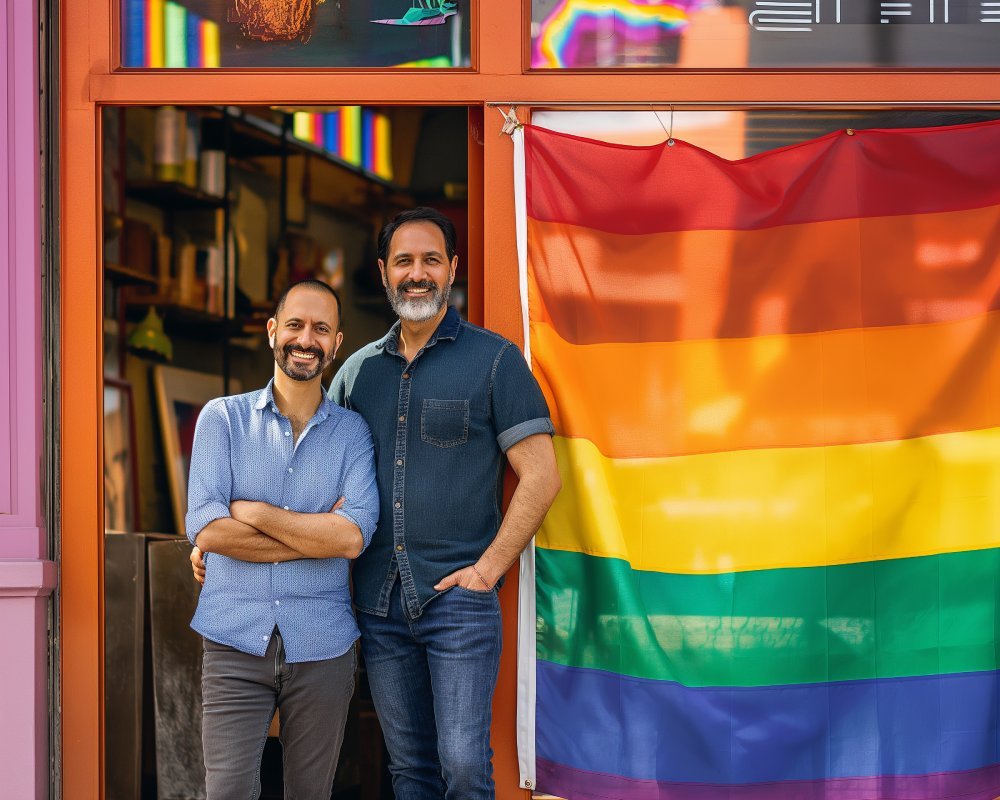
15.2. Discriminatory Exceptions and Religious Freedoms
- Refusal of Services: Certain states or nations pass “religious freedom” laws allowing adoption agencies or wedding service providers to deny LGBTQ clients. This can hamper gay parents’ quest to adopt or celebrate milestones.
- License to Discriminate: Under the guise of religious conscience, some professionals refuse to treat LGBTQ families equitably. Activists dispute these laws, stating they violate broader equality statutes.
15.3. Birth Certificates and Surrogacy Legality
- Surrogate Situations: In surrogacy-friendly locales, parents can be recognized from birth. In others, a gestational mother might be legally listed as the child’s mother, forcing gay dads to adopt their own genetic child.
- Inconsistencies: Even within a single country (like the U.S.), rules differ. In some places, the non-biological parent automatically appears on the birth certificate; in others, legal steps remain mandatory.
15.4. Immigration and Cross-Border Recognition
- International Moves: A gay family recognized in one country might move abroad, only to discover their marriage or parentage is invalid there. This jeopardizes custody, spousal visas, or child-related benefits.
- Refugee/Asylum: LGBTQ families fleeing persecution face unique hurdles proving family ties if local authorities don’t acknowledge same-sex unions or trans identities.
15.5. Litigation and Activism
- Strategic Lawsuits: LGBTQ groups often file strategic cases to set precedents—like ensuring co-parent adoption rights or banning orientation-based adoption bans. Each victory or defeat ripples into legislative and social changes.
- Human Rights Treaties: The European Court of Human Rights or the Inter-American Court often shape domestic laws. Rulings in favor of LGBT parents can obligate signatory states to comply, albeit slowly.
15.6. Ongoing Reforms
Activists lobby for universal guidelines so that, for instance, a child’s parents are recognized across jurisdictions—similar to how heterosexual marriages are portable. There’s also a push for simpler procedures for “parenthood at birth,” especially for lesbian or trans couples, sparing them from post-birth legal hoops.
Conclusion: The legal terrain for gay parents is a patchwork of progressive statutes and discriminatory loopholes. Even countries heralded as LGBTQ-friendly might harbour outdated laws requiring additional adoption steps. As families increasingly transcend borders, uniform global recognition of same-sex parentage remains a lofty yet vital aspiration. Progress hinges on persistent legal activism and international cooperation to secure fundamental parental rights for all, irrespective of orientation or gender identity.

16. Social Acceptance and Community Support for LGBTQ Families
Despite evolving legal protections, social acceptance plays an equally potent role in shaping gay parenting experiences. Strong community backing can empower families to thrive, whereas hostility sows stress and isolation. This section examines how local networks, institutions, and broader culture can uplift or undermine LGBTQ parents.
16.1. Neighborhood and Local Engagement
- Welcoming Neighborhoods: In many cities, gay parents cluster in affirming districts near LGBTQ centers or inclusive schools. Friendly neighbors become an informal safety net, offering playdate reciprocity or moral support.
- Small-Town Complexities: Some families prefer quiet rural life but may face prying questions or gossip. If the community fosters open-mindedness, acceptance blossoms. If not, microaggressions can dampen a sense of belonging.

16.2. Extended Family and Allies
- Positive Influences: Grandparents, siblings, or aunts who embrace gay parents can model acceptance for others in the family, bridging generational divides. “We love you no matter what” messages alleviate stress.
- Conflicts: Others may attempt to overshadow parents’ authority or question the child’s upbringing at family gatherings. Handling these tensions requires boundaries and, sometimes, limiting contact.
16.3. LGBTQ Parenting Networks
- Support Groups: Local or online circles of LGBTQ parents share practical tips, from baby formula brand recommendations to legal strategies for adoption. Peer advice fosters a sense of camaraderie.
- Community Events: Pride family picnics or “Rainbow Families” day gatherings unite families for socializing, child-friendly activities, and forging lifelong friendships.
16.4. Religious Institutions
- Progressive Congregations: Some churches, synagogues, or mosques openly welcome gay parents, offering child blessings or inclusive youth groups. This spiritual affirmation can be vital for families who value faith.
- Exclusion: Conversely, conservative denominations might ban or shame LGBTQ families, fueling guilt or complicating religious identity. Many parents then seek more inclusive faith communities or create alternatives.
16.5. Educational Settings
- Inclusive Curricula: Teachers who incorporate books with same-sex parents or diverse family trees teach empathy from a young age. This significantly eases children’s social experiences.
- Anti-Bullying Policies: Clear policies protect children from harassment due to their parents’ orientation. Administrations that promote “family diversity” fosters healthy peer attitudes.
16.6. Media Portrayals
Positive representation in TV shows, children’s books (like And Tango Makes Three), or YouTube channels featuring same-sex families can normalize the concept for mainstream audiences, diminishing stigma. Kids see families like theirs depicted matter-of-factly, reinforcing self-esteem.
In Summation: Social acceptance emerges from layered influences—neighbors, extended relatives, faith groups, and educational institutions. Where acceptance flourishes, LGBTQ families enjoy community-based security and emotional well-being. Conversely, lacking support intensifies the burdens of parenting. Encouraging inclusivity across these domains ensures that gay parents and their children can flourish without perpetual anxiety about external judgment.
17. Children’s Well-Being: Academic Performance, Mental Health, and Friendships
When discussing gay parenting, perhaps the most pressing question outsiders ask is, “How do the kids turn out?” Over decades, studies confirm that children raised by same-sex parents fare as well—if not better—on numerous measures compared to their peers from straight-parent households. This segment summarizes key research insights into children’s well-being in LGBTQ families.
17.1. Academic Performance
- Scholarly Studies: Multiple meta-analyses (e.g., by the American Psychological Association) report no significant differences in academic achievement between kids of same-sex vs. opposite-sex parents.
- Contributing Factors: Parental involvement, socioeconomic stability, and supportive school climates typically overshadow parental orientation. Some children of lesbian mothers, for instance, show robust school performance, possibly linked to a culture of communication and involvement.
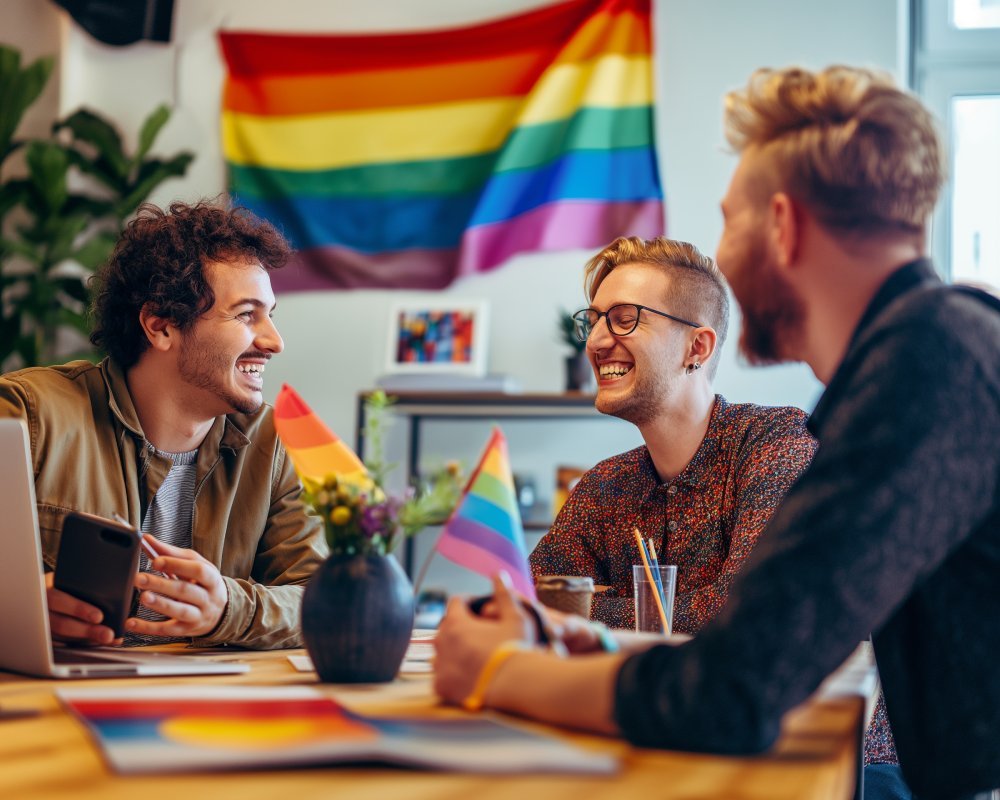
17.2. Mental Health Outcomes
- Confidence and Self-Esteem: Being raised in a home that values acceptance can bolster a child’s self-esteem. Some kids develop heightened empathy, having witnessed prejudice directed at their parents.
- Potential Stressors: The main mental health risk stems from external homophobia or bullying, not from the parents’ orientation. Access to counseling or a supportive environment can mitigate these threats.
17.3. Social and Emotional Development
- Peer Relationships: Research indicates children of LGBTQ parents form friendships similarly to their peers. When teased about parental orientation, they often learn resilience. Their families prepare them to handle curious or rude remarks with calm confidence.
- Gender Role Flexibility: These children often adopt fluid perspectives on gender roles, having witnessed a mom repair the car or a dad cook dinner. This can reduce internalized sexism, encouraging them to pursue any passion irrespective of “gender norms.”
17.4. Sexual Orientation of Children
One repeated myth is that kids will mimic their parents’ orientation. Data clarifies that sexual orientation arises from a complex blend of genetics, environment, and personal factors—there’s no evidence that having gay parents “makes” a child gay. Indeed, most children of gay parents identify as heterosexual, though they may hold more open attitudes toward sexual and gender diversity.
17.5. Parenting Styles
- Emphasis on Communication: Many LGBTQ parents are highly attuned to discussing identity, respect, and fairness. Children learn conflict resolution, empathy, and inclusive language at an early age.
- Discipline and Structure: As with any family, approaches vary—some adopt gentle parenting, others use time-outs or other methods. There’s no single “gay style” of discipline.
17.6. The Role of Societal Support
Consistent with minority stress theory, the degree of social support or discrimination a child faces can influence outcomes. With robust acceptance at school, supportive relatives, and friendly neighborhoods, children thrive. Where hostility reigns, parents must double down on emotional reassurance and coping strategies.
Conclusion: By examining children’s well-being in same-sex households, we see the critical factor isn’t parental orientation—it’s the nurturing environment. The vast majority of empirical research suggests that children with LGBTQ parents develop healthily, excel academically, cultivate strong friendships, and show empathy. The only persistent risk factor is external prejudice, reinforcing that inclusive communities and protective policies are integral to healthy child development in gay-parented families.
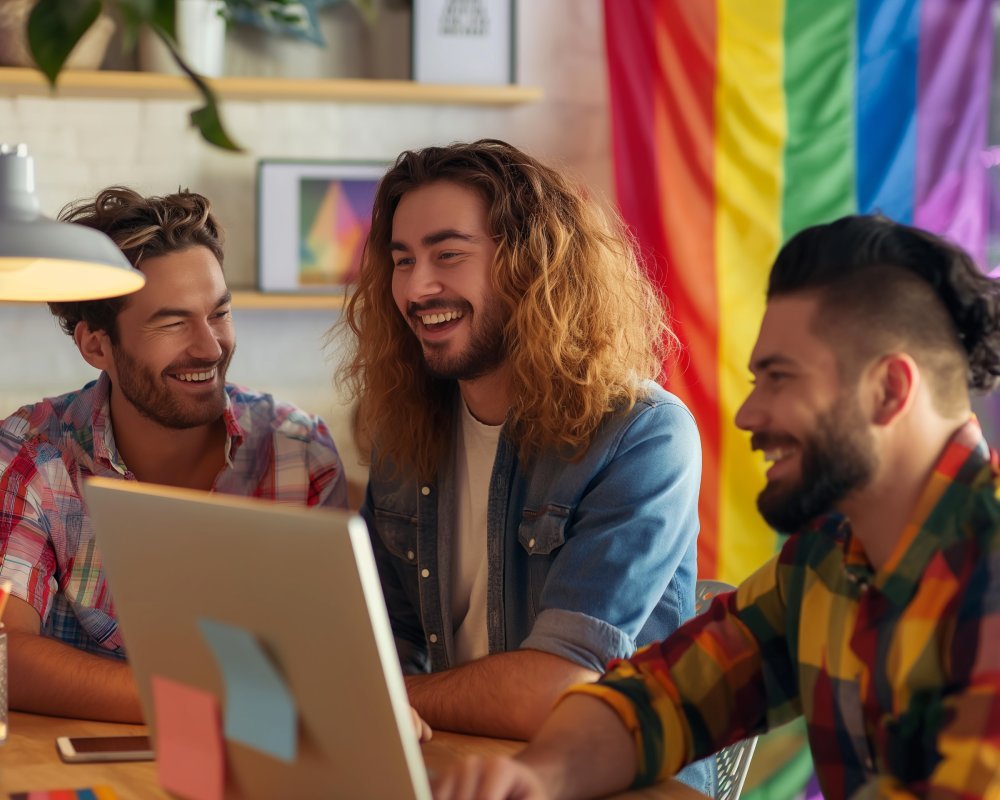
18. Parenting Approaches and Strategies: Discipline, Communication, and Identity
Parenting styles vary widely, but gay parents often bring distinct perspectives shaped by their own experiences with discrimination, identity, and relationships. In forging child-rearing strategies, they balance standard parental responsibilities with unique lessons about acceptance and authenticity.
18.1. Emphasis on Open Communication
- Identity Conversations: Gay parents often proactively explain their orientation to children, preparing them for peer questions. They encourage kids to ask anything, fostering a norm of honesty.
- Navigating Differences: Encouraging children to celebrate diversity doesn’t only revolve around LGBTQ identity. It might expand to embracing different ethnicities, religions, or abilities, reflecting lessons from the parents’ lived experiences.

18.2. Discipline and Behavior Management
- Gentle Parenting: Some adopt a gentle approach, avoiding physical punishment, focusing on empathy, time-ins, and constructive dialogue. This can reflect broader LGBTQ values of respect and emotional intelligence.
- Boundaries and Consistency: Others might rely on chore charts or tech-time limits, consistent with mainstream parenting guidelines. The key remains consistency, love, and clear expectations—factors proven essential for any child’s security.
18.3. Teaching Pride and Resilience
- Cultural Pride: Attending Pride events or reading LGBTQ-friendly children’s books fosters a sense of celebration around the family’s identity. Kids learn that their household is special but not lesser.
- Resilience Tools: Knowing potential bullying or stigma might arise, parents equip children with coping phrases (“My family is awesome and loves me.”) and encourage them to confide if harassment occurs.
18.4. Engaging Extended Community
- Playdates with Inclusive Families: Parents might schedule time with other same-sex families or open-minded neighbors, ensuring children witness a spectrum of family types.
- Supporting Allies: Children see their parents forging friendships with supportive straight couples or grandparents, reinforcing that acceptance transcends orientation lines.
18.5. Navigating Adolescence and Identity
- Sexual Orientation Discussions: LGBTQ parents, having traversed coming-out journeys, often empathize deeply with a teen’s identity questions. They may provide a safe space for discussion, neutralizing taboo around sexuality.
- Gender Expression: If a child explores gender nonconformity, gay parents might be more open to letting them try different clothes or pronouns, drawn from empathy for personal authenticity.
18.6. Reflection, Self-Care, and Joy
Parents who overcame homophobia may remain vigilant about mental health, devoting time to family therapy or self-care to avoid passing on stress. Moments of shared laughter—be it cooking a rainbow-themed dinner or dancing to pop anthems—demonstrate how acceptance fosters a joy-filled home.
Conclusion: Parenting approaches among gay families often revolve around synergy between typical child-rearing practices (structure, discipline, support) and targeted strategies (teaching resilience against prejudice, celebrating diversity). The hallmark is open dialogue—empowering children to understand and embrace differences, not only in orientation but across the social tapestry. Through such nurturing, these families exemplify how identity-affirming environments can produce compassionate, confident, and socially aware young individuals.
19. Intersectionality: Race, Religion, Ability, and Class in LGBTQ Families
It’s impossible to comprehensively address what gay parenting is like without acknowledging intersectionality—the overlapping identities (race, ethnicity, religion, disability, class) that shape each family’s experiences. LGBTQ parents from marginalized communities encounter unique challenges, while also drawing on broader cultural strengths.
19.1. Racial and Ethnic Dimensions
- Black or Brown LGBTQ Parents: They often navigate racism in predominantly white LGBTQ spaces and homophobia in their racial community. This dual burden affects their children, who may face discrimination from multiple angles.
- Cultural Heritage: Many families blend two or more ethnic backgrounds, teaching children bilingual languages or traditions. Pride in culture merges with Pride in LGBTQ identity, forging layered identities.

19.2. Religious and Faith-Based Contexts
- Devout LGBTQ Parents: Some remain practicing Christians, Muslims, Jews, Hindus, or Buddhists. They might join progressive congregations that affirm same-sex families, though sometimes face condemnation from traditional sects.
- Navigating Ceremonies: Baptisms, bar/bat mitzvahs, or other rites can be joyous or fraught if religious authorities or extended family disapprove.
19.3. Disability and Accessibility
- Disabled LGBTQ Parents: For parents with physical or intellectual disabilities, daily routines can be more complex. Navigating a world that often lacks accessibility demands creativity and perseverance. The child might develop strong empathy from seeing a parent adapt.
- Children with Disabilities: Families might face misconceptions that gay parents are less capable of handling a special-needs child. In reality, LGBTQ families can be especially prepared to challenge stigmas and advocate for inclusive healthcare.
19.4. Economic Factors
- Class Disparities: Surrogacy or private adoption can be prohibitively expensive. Working-class LGBTQ parents may rely on public adoption or fostering programs. Finances also shape the family’s living conditions—urban vs. suburban vs. rural—and exposure to acceptance.
- Poverty and Homelessness: Some LGBTQ parents face job discrimination or difficulty accessing stable employment. Despite that, they find resilience in community networks, mutual aid, or philanthropic organizations.
19.5. Cultural Strengths and Resourcefulness
Intersectional parents often rely on extended kinship networks—like “aunties” in African American culture or multi-generational Latino households—for childcare and emotional support. They seamlessly fuse traditions (e.g., Ramadan or Lunar New Year) into their household rhythms, forging dynamic multicultural and queer-affirming spaces.
19.6. Advocacy and Representation
Community organizers fight for broader visibility of families spanning these intersections. Representation in media or policy discussions is vital; a singular “white gay dad” narrative excludes countless families’ stories. Intersectionality underscores the complexity, ensuring no single blueprint can define “gay parenting.”
Conclusion: Intersectionality in LGBTQ families underscores that sexuality or gender identity is only one axis of identity. Race, religion, ability, and class can shape how families navigate acceptance, legal protections, and day-to-day life.
Advertisement · Scroll to continue

More Recommended
What Is The Life Expectancy For People Living With HIV?
What Is The Life Expectancy For People Living With Hiv? – The life expectancy for [...]
Breaking down the Myths: How Target Marketing to the Gay Community is Shaping the Future of Advertising
Breaking down the Myths: How Target Marketing to the Gay Community is Shaping the Future [...]
Marketing strategies for attracting and retaining Lesbian clientele
Marketing to the LGBTQ community is not just about inclusion and representation—it’s also about understanding [...]
How Do Gays Celebrate Pride Month?
How Do Gays Celebrate Pride Month? – Pride Month is an exuberant celebration recognized globally, [...]
From Taboo to Trendy: The Evolution of Lesbian Advertising
From Taboo to Trendy: The Evolution of Lesbian Advertising In recent years, the advertising industry [...]
Breaking Barriers: How Lesbian-Owned Businesses are Thriving in the Market
Breaking Barriers: How Lesbian-Owned Businesses are Thriving in the Market As we continue to progress [...]
Can Gays Adopt Children Legally?
Can Gays Adopt Children Legally? – In recent years, the landscape of family and adoption [...]
How do you practice inclusivity at work?
How do you practice inclusivity at work? – In today’s rapidly evolving workplace, embracing inclusivity [...]
Pride Month for Brands: Maximizing Impact with LGBTQ+ Advertising
Pride Month for Brands: Maximizing Impact with LGBTQ+ Advertising – Pride Month is an annual [...]